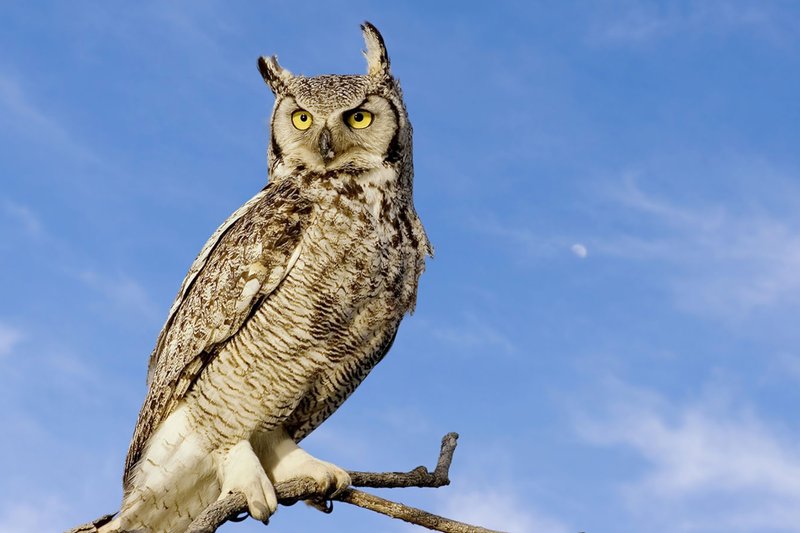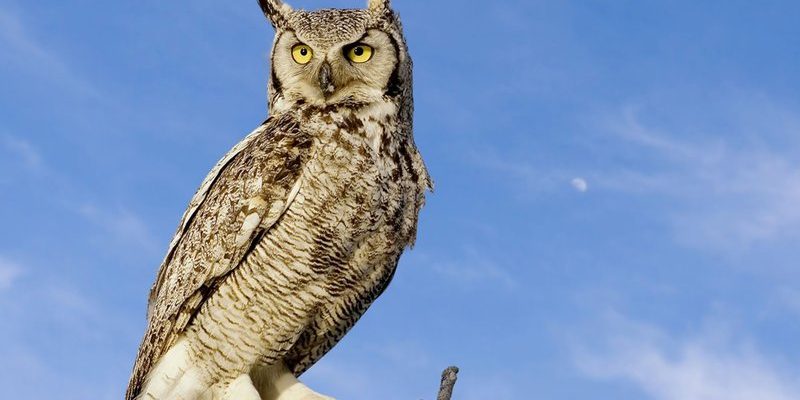
Imagine them as the chameleons of the avian world, cleverly adjusting their behaviors and traits to fit their surroundings. This not only keeps them alive but also helps maintain the balance of their ecosystems. Let’s dive into the amazing ways Great Horned Owls adapt to thrive in their environments, and we’ll uncover the secrets behind their success.
Physical Adaptations
One of the first things you’ll notice about Great Horned Owls is their striking appearance. But those fluffy tufts on their heads aren’t just for show. They serve a purpose! These tufts can help the owls camouflage within their surroundings, breaking up their outline against tree bark and leaves. This is crucial for hunting and avoiding predators.
Their powerful build is another key factor. Great Horned Owls are large and muscular birds, equipped with strong talons and a sharp beak. This makes them excellent hunters. They can catch a wide range of prey, from small mammals to birds, and even reptiles. Their keen eyesight and excellent hearing mean they can spot movement in the dark, giving them a hunting edge at night.
The owls’ feathers are also specially adapted. They have soft fringes on their wings that help muffle sound, allowing them to swoop down silently on unsuspecting prey. It’s like having a stealth mode that gives them a huge advantage while hunting. All these physical attributes combine to create a bird that is incredibly well-suited to its environment.
Behavioral Adaptations
Great Horned Owls exhibit fascinating behavioral adaptations that help them thrive in various settings. For instance, they are opportunistic feeders, which means they’ll adjust their diet based on what’s available. If a certain type of prey becomes scarce, they can switch to hunting different animals. Talk about versatility!
They also have unique hunting strategies. During the day, you might find them resting on a high perch, scanning the area for movement. At dusk and dawn, they become more active, taking full advantage of the low light. Their ability to adapt their hunting times based on prey activity is a smart survival tactic.
Another interesting behavior is their nesting habits. Great Horned Owls often use nests built by other birds—or even man-made structures—rather than creating their own. This adaptability not only saves them energy but also allows them to occupy spaces that are already well-suited for raising their young. In this way, they maximize their chances of survival.
Habitat Preferences
Great Horned Owls are known for their wide range of habitat preferences. They can be found in forests, swamps, grasslands, and even urban areas. This ability to thrive in diverse environments is a testament to their adaptability.
You might be wondering how they manage to survive in bustling cities. In urban areas, Great Horned Owls have adapted by using tall buildings as perches and nesting sites. They often hunt in parks or gardens, demonstrating that they can make the most of what’s available—even in concrete jungles.
In more natural settings, they prefer areas that offer dense cover for hunting, like forests or woodlands. But they’re not picky—anywhere there’s food and a place to nest will work for them. This flexibility in habitat selection gives them a significant advantage over other species that may be more habitat-specific.
Communication and Social Behavior
When it comes to communication, Great Horned Owls have their own distinct language. Their hoots, which can vary in pitch and tone, serve different purposes like marking territory or attracting a mate. These vocalizations are essential for their social behavior and survival.
In addition to their calls, body language plays a crucial role in their interactions. When threatened, they might puff up their feathers and display their size to scare off potential threats. This behavior showcases their adaptability when it comes to dealing with danger in their environment.
Interestingly, Great Horned Owls are generally solitary creatures, except during the breeding season. This behavior allows them to establish their own territories without competition. Their ability to thrive alone is another factor that contributes to their success in various habitats.
Impact of Seasonal Changes
Seasonal changes can impact animal behavior significantly, and Great Horned Owls are no exception. As seasons shift, these owls adapt their behaviors accordingly. For instance, during winter, when prey becomes less abundant, they might expand their hunting range or adjust their hunting techniques to ensure they can still find food.
During the breeding season, which typically occurs in late winter, these owls become more territorial. They will vigorously defend their nesting sites from intruders, showcasing their adaptability in ensuring the survival of their offspring.
Their feathering also changes to some extent with the seasons. The thick, insulating feathers help keep them warm in colder weather, while the coloration may help them blend in with their surroundings, depending on the season. This adaptability to seasonal fluctuations is crucial for their long-term survival.
Relationship With Ecosystem
Great Horned Owls play a vital role in their ecosystems. As predators, they help control the populations of various prey species, from rodents to smaller birds. This balance is essential; without these owls, certain animal populations could explode, leading to overgrazing and other ecological issues.
Moreover, their presence indicates a healthy ecosystem. When Great Horned Owls thrive, it often means that there’s an abundance of prey and suitable habitat. They are like the canaries in the coal mine, signaling the overall health of their environment.
These owls also engage in a sort of ecological cleanup. By consuming the sick or weaker members of prey species, they help maintain the health of those populations. In many ways, Great Horned Owls are not just survivors; they’re essential players in the game of life in their ecosystems.
Great Horned Owls are remarkable creatures, showing us just how adaptable wildlife can be. From their physical traits to their behaviors and habitats, they’ve found ways to not just survive but thrive in various environments. By observing their adaptations, we gain insights into the resilience of nature and the interconnectedness of all living beings.
So, the next time you hear a Great Horned Owl call in the night, take a moment to appreciate all the incredible ways it has adapted to its environment. Nature is full of wonders, and these owls are a perfect example of how life finds a way.

